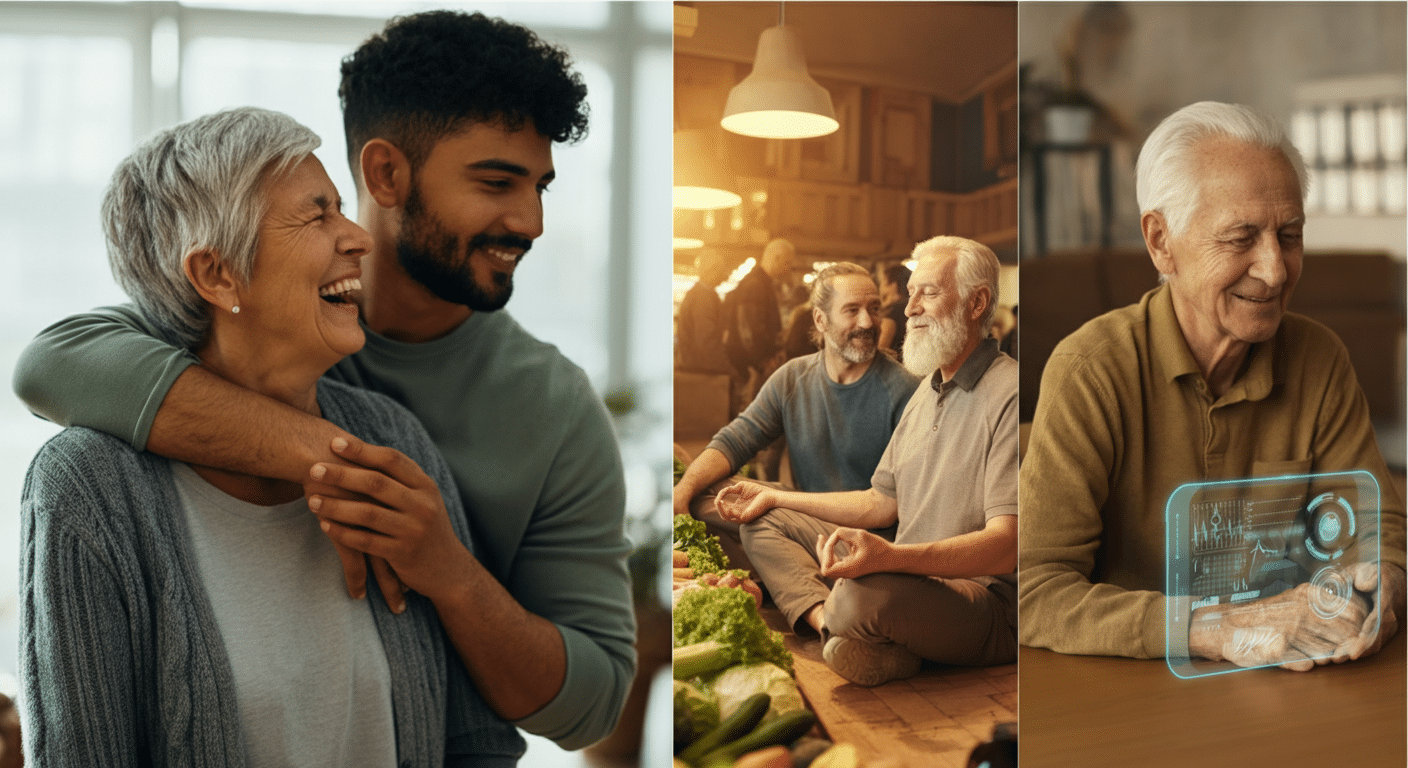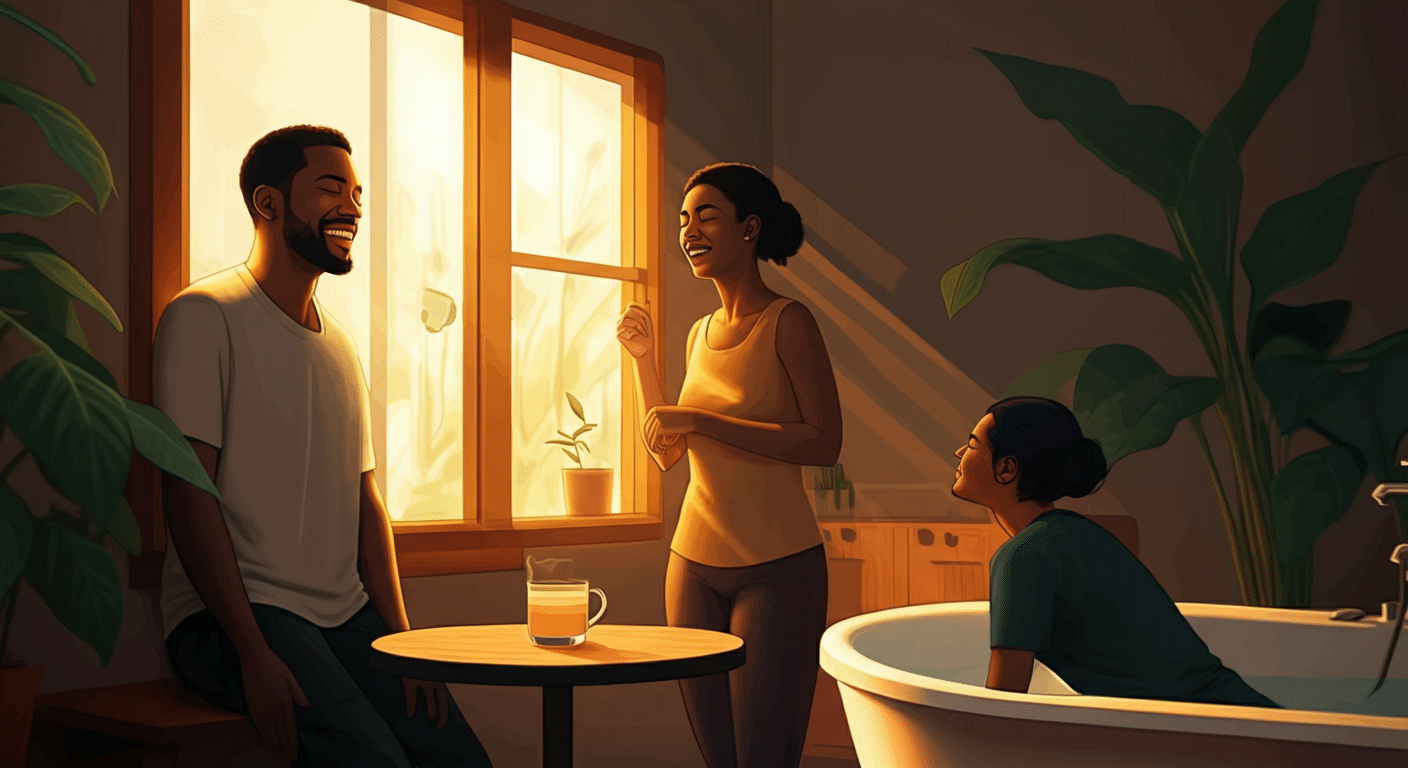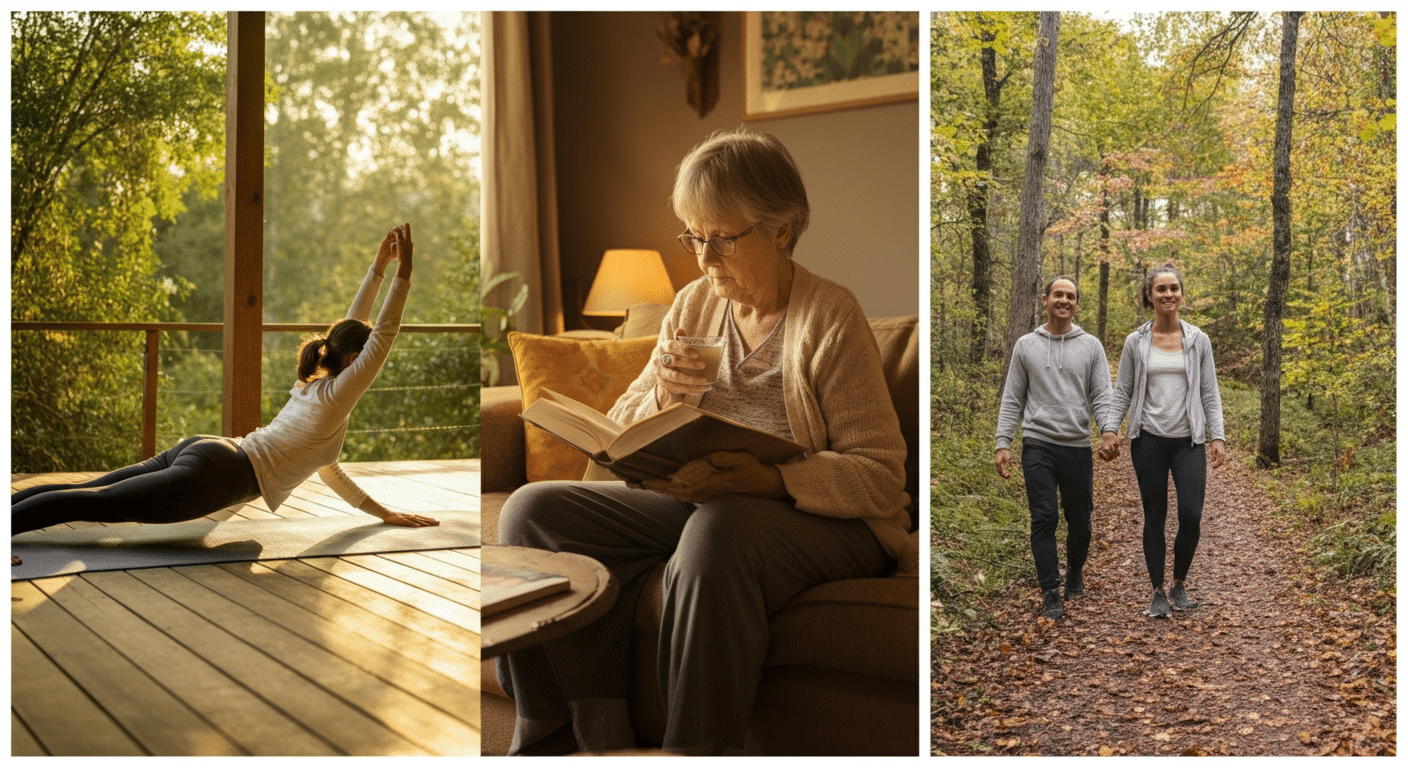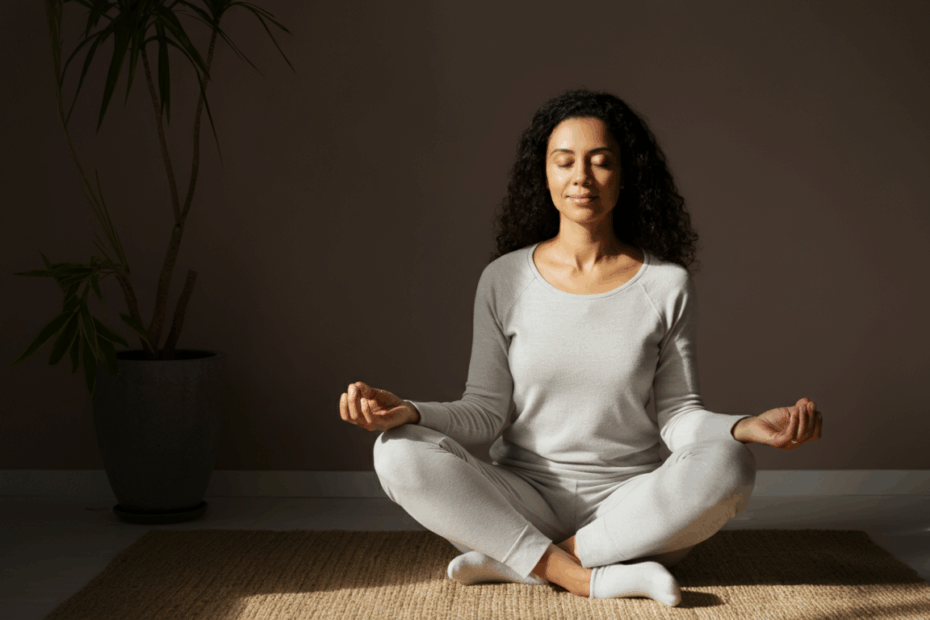Want a longer, healthier life? Discover personalized wellness trends using AI & data. Unlock YOUR longevity in 2025!#HealthyLongevity #PersonalizedHealth #WellnessTrends
🎧 Listen to the Audio
If you’re short on time, check out the key points in this audio version.
📝 Read the Full Text
If you prefer to read at your own pace, here’s the full explanation below.
Topic Overview
John: Hello everyone, and welcome to our blog post on the fascinating trend of Healthy Longevity Wellness Trends Personalized Health. As a seasoned lifestyle journalist, I’ve seen many wellness movements come and go, but this one stands out because it combines the pursuit of longer, healthier lives with highly tailored approaches to well-being. Essentially, it’s about using personalized strategies—often informed by technology and individual data—to promote longevity and overall health. This isn’t just about adding years to your life but adding life to your years, focusing on preventive habits that suit your unique body and lifestyle [1].

Lila: Wow, John, that sounds so empowering! As a junior writer who’s always curious about new trends, I love how this isn’t a one-size-fits-all deal. For beginners like me, can you break it down? Like, what does ‘personalized health’ really mean in this context? From what I’ve gathered, it’s about things like using apps or wearables to track your own metrics and adjust your diet or exercise accordingly, right?
John: Absolutely, Lila. Personalized health in this trend means customizing wellness practices based on your genetics, environment, and daily habits. For instance, instead of following a generic diet, you might use blood tests or AI tools to create a nutrition plan that’s just for you. This trend draws from global insights, including posts on X where people share their journeys with things like mitochondrial health or AI-driven coaches. It’s gaining traction worldwide, from bustling cities in Asia to quiet towns in Europe, as people seek sustainable ways to age well [2].
Lila: That’s relatable—I’ve seen friends in different countries talking about this on social media. It’s like tailoring your wardrobe but for your health! So, for our global readers, this could mean incorporating local foods into a personalized plan, maybe using seasonal ingredients from markets in Japan or fresh produce in Mediterranean diets.
John: Precisely. In the past, wellness trends were more generalized, like the rise of yoga in the early 2000s. Currently, with advancements in tech, we’re seeing a shift toward data-driven personalization. Looking ahead, experts predict this will evolve with more accessible tools, making healthy longevity achievable for everyone, regardless of background [3].
Lila: Exciting! I can imagine someone in Brazil using an app to blend samba dancing with personalized fitness goals. Okay, let’s dive deeper.
Why It’s Trending Now
John: This trend is exploding right now due to a perfect storm of factors. The global wellness market is booming, valued at around $1.8 trillion as of recent reports, with a strong focus on longevity [4]. Posts on X highlight how people are increasingly aware of aging populations and the desire to live vibrantly longer. For example, discussions about ‘healthspan’—the years lived in good health—are popping up frequently, driven by real-time sharing of personal stories.
Lila: Oh, I get it—it’s like the world woke up after the pandemic and realized health isn’t guaranteed. Why else do you think it’s big in 2025?
John: Exactly, Lila. The pandemic accelerated interest in preventive health, and now with AI and wearables becoming affordable, personalization is key. Insights from X show users posting about trends like red light therapy or collagen supplements, tying into longevity. Media outlets note that in regions like Asia, where life expectancy is high, there’s a cultural emphasis on holistic practices, blending tradition with modern tech [2].
Lila: That makes sense. I’ve noticed on X people sharing ‘ins and outs’ lists for 2025, like favoring natural fabrics or home-cooked meals. It’s trending because it’s accessible—no need for fancy gyms, just smart, personal tweaks.
John: True. Currently, economic pressures make cost-effective, home-based wellness appealing. Looking ahead, as tech integrates more, this trend could become a staple in daily life globally [1].
Lila: I’m hooked already! Let’s talk benefits next.
Real-Life Benefits
John: One of the biggest draws is improved quality of life. Studies and expert insights show that personalized approaches can lead to better management of energy levels and reduced risk of chronic issues. For instance, focusing on mitochondrial health— the powerhouse of cells—can enhance vitality, as discussed in wellness reports [3].
Lila: Mitochondrial what? Break it down for us beginners, John. Is that like boosting your inner battery?
John: Yes, exactly! It’s about optimizing cell function for longer-term energy and health. Real-life benefits include better sleep, stronger immunity, and mental clarity. Posts on X from users over 50 share how simple habits like daily walking and real food contribute to feeling youthful [5].
Lila: Relatable example: Imagine a busy parent in India using a wearable to track sleep and adjust their routine, leading to more energy for family time. Or someone in the US dumping processed foods for whole ones, as per those X lists, and noticing clearer skin.
John: Spot on. In the past, benefits were anecdotal; currently, data from wearables provide evidence. Looking ahead, this could mean communities worldwide sharing success stories, fostering global inspiration [2].
Lila: So empowering! Now, how are folks actually doing this?
How People Are Using It
John: People are integrating this trend through everyday routines. From X insights, many start with tracking devices like rings or monitors for personalized data on sleep, nutrition, and activity. Then, they adapt—perhaps adding resistance workouts or sauna sessions based on what their body needs [5].
Lila: Like that post about ‘ins and outs’—beef tallow in skincare or red light therapy. Sounds fun! Are there cultural twists?
John: Definitely. In Japan, it might involve traditional elements like miso for gut health, personalized via apps. In Europe, outdoor activities like grounding (walking barefoot) are popular, as seen in X discussions. Globally, it’s about blending local habits with tech for longevity [2].
Lila: Cool example: A user on X mentioned cold exposure and dumping iron—wait, dumping iron? Like reducing excess through diet?
John: Yes, referring to managing iron levels for health, a topic in longevity circles. Currently, apps help customize these, making it practical for beginners [3].
Lila: Love the variety! Tips coming up?
Tips for Trying It Yourself
John: For starters, begin small. Track your habits with a free app to understand your baseline. Then, incorporate one change, like adding more whole foods or daily sun exposure, as suggested in wellness trends [1].
Lila: Great advice! What about personalization? Should I get a blood test?
John: Consult a professional for tests, but start with accessible tools. Tips include:
- Monitor sleep and activity with wearables.
- Focus on natural, seasonal foods for nutrition.
- Try low-impact exercises like walking or resistance training 3-4 times a week.
- Incorporate recovery methods like sauna or red light if available.
Remember, consistency over perfection [4].
Lila: Yes! For global readers, adapt to your climate—sunrise walks in sunny Australia or indoor alternatives in colder Canada.
John: Exactly. Looking ahead, integrate AI for tailored plans, but always prioritize balance [3].
Lila: Super helpful. Now, any warnings?

Misconceptions & Cautions
John: A common misconception is that this trend requires expensive gadgets. In reality, basics like walking and real food are free and effective [5]. Caution: Don’t over-rely on tech without professional guidance, as it could lead to misinformation.
Lila: True—I’ve seen hype on X about ‘miracle’ hacks. Is it all backed by science?
John: Not everything. For example, while red light therapy shows promise in studies, it’s not a cure-all. Misconception: Longevity means extreme diets; actually, it’s about sustainable personalization. Caution for global audiences: Cultural diets vary, so adapt safely [2].
Lila: Good point. Avoid extremes, like sudden cold exposure without building up.
John: Precisely. In the past, trends led to fads; currently, focus on evidence-based practices [1].
Lila: Wise words. What are people saying?
What People Are Saying on X + Expert Voices
John: On X, sentiments are positive, with users sharing lists of ‘ins’ like collagen and sauna for 2025. One post from early 2025 highlighted personalized programs like VitaliQ for tailored health plans. Experts echo this, noting mitochondrial health as a priority [3].
Lila: Yeah, I saw posts about light diets and subtractive health—reducing toxins. Experts from media say AI therapists could change mental wellness.
John: Indeed. A user shared longevity strategies at 70, like cold exposure and real food. Expert voices from reports emphasize healthspan over lifespan [4].
Lila: Inspiring! Related ideas?
Related Habits or Concepts
John: This ties into biohacking—optimizing biology through lifestyle. Related: Blue Zones habits, like community and plant-based eating in long-lived regions [2].
Lila: Like Okinawa’s diet? Cool connection.
John: Yes. Also, somatic healing—body-focused stress relief—and digital fitness for personalized workouts [3].
Lila: So many links! FAQ time.
FAQ (Frequently Asked Questions)
John: Q: What’s the first step? A: Assess your current habits and start tracking one area, like sleep.
Lila: Q: Is it expensive? A: No, many basics are free; tech is optional.
John: Q: How does it differ from regular wellness? A: It’s highly individualized, using data for precision [1].
Lila: Q: Safe for all ages? A: Yes, but customize and consult experts.
John: Q: Future outlook? A: More integration with AI for global accessibility [3].
Lila: Great answers!

Final Reflections
John: Covering Healthy Longevity Wellness Trends Personalized Health was refreshing—it shows how even niche trends reflect bigger lifestyle shifts worldwide. The smallest change can spark long-term improvement.
Lila: Totally! I learned so much about Healthy Longevity Wellness Trends Personalized Health, and I’m excited to try it out myself. It feels like a trend that brings people closer to themselves.
Disclaimer: This article is intended for general informational purposes only. Always consult with a qualified expert for personal advice.
References
- [1] Vogue Business – 2025’s hottest trend? Living longer
- [2] Dr. Axe – Wellness Trends 2025: Personalized Health Takes Center Stage
- [3] AFPA – Top Health, Wellness, and Fitness Trends for 2025
- [4] McKinsey – The trends defining the $1.8 trillion global wellness market in 2024
- [5] The Independent – Experts say these are the 2025 wellness trends you need to know about
